第四章 九、瓦当
王志杰
陕西是周、秦、汉、唐等十多个王朝的都城所在地,其间宫殿官署、离宫别馆、陵墓、苑囿遍及全省各地。虽然这些建筑今已不存在了,但其遗迹和砖瓦等建筑材料随处可见。早在宋元时,瓦当纹饰即引起人们的重视和兴趣,但因当时所见甚少,加之出土地未详,故多未见于著录。建国以来,随着文物考古工作的不断发展,调查发掘的建筑遗址越来越多。据不完全统计,先后在长安沣河两岸的沣镐遗址、扶风与岐山的周原遗址、凤翔的先秦雍城遗址、咸阳的秦都城遗址、临潼的秦栎阳遗址、西安的秦阿房宫遗址、徐家湾遗址、陕南及陕北的秦汉遗址和秦始皇陵、西汉长安城、华阴华仓、淳化甘泉宫,以及唐大明宫、兴庆宫、华清宫、九成宫等不下数十处的考古调查和发掘中,我们获得了极为丰富的瓦当及其他建筑材料。其中如周原出土的最早的砖、瓦、瓦当,在我国古代建筑史上是历史性的一个突破。凤雏甲组建筑遗址的瓦经碳十四测定分析,为公元前1095±90年,从而有力说明,我国用瓦最晚当在公元前11世纪。1988年在岐山县蒲村乡西周遗址中出土的空心砖,是迄今为止我省发现最早的空心砖。1976年在扶风召陈遗址出土的重环纹瓦当、临潼秦始皇陵出土的所谓“瓦当王”,更使人耳目一新。其他如凤翔雍城遗址先后三次发现的春秋时期铜质建筑构件、隋唐时期的琉璃砖、瓦及其他装饰建筑材料,都是极其珍贵的实物例证。这些实物不仅丰富了我国文物宝库,而且为系统研究我国古代建筑的特点和演变过程,提供了最有说服力的实物资料。瓦当的纹饰图案种类繁多,古拙美观,出神入化,更具有独特的艺术价值。
茂陵博物馆收藏的茂陵园区出土的西汉瓦当数量多品质佳,大部分为稀世文物。其中有10多件文字瓦当为《陕西省文物志》所收录。
I Eaves Tiles
A dozen dynasties including the Qin(221-206 B.C.),the Han(206 B.C.-220 A.D.)and the Tang(618-907)decided on seat of their capitals in Shaanxi,where spread their palaces,government offices,resorts,mausoleums and imperial gardens.In spite of the fact that those architectures no longer exist,what has been left of them and their construction materials are found here and there,like bricks,eaves tiles,etc.As early as in the Song Dynasty(960-1279),decorative patterns on eaves tiles aroused people's attention and interest,but they were mostly not reported in recordings due to excavation in small quantities and lack of exact origin.After the establishment of new China,more remains sites underwent archaeological excavation.According to incomplete statistics,archaeological investigation and excavation have been conducted to no less than ten remains sites in Shaanxi covering the Fenghao along the Fenghe River at Chang'an,the Zhouyuan at Fufeng and Qishan,the Yongcheng at Fengxiang,the Metropolis of the Qin at Xianyang,the Liyang of the Qin at Lintong,the A'fang Palace at Xi'an,the Xujiawan at Xi'an,the remains sites of the Qin and the Han at southern and northern Shaanxi,the Qinshihuang Mausoleum,the Chang'an of the Western Han Dynasty(206 B.C.-25 A.D.),the Huacang at Huayin,the Ganquan Palace at Chunhua,the Daming Palace of the Tang,the Xingqing Palace of the Tang,the Huaqing Palace of the Tang and the Jiucheng Palace of the Tang.An extremely rich harvest of eaves tiles and other construction materials was thus obtained.Discovery of bricks,tiles and eaves tiles from Zhouyuan marked a historic breakthrough in ancient architectures of China.An analytical detection by C-14 shows that they were made in 1095±90 B.C.That forcibly proves that tiles began use no later than 11th century B.C.in China.Surprising discoveries cover hollow bricks unearthed from the Zhouyuan Remains Site at Qishan in 1988 and also the earliest counterpart ever found in Shaanxi,eaves tiles bearing double rings unearthed from the Zhaocheng Remains Site at Fufeng in 1976 and immense eaves tiles unearthed from the Qinshihuang Mausoleum at Lintong.Apart from that,discovery of construction components used in the Spring and Autumn Period(770-476 B.C.),glazed bricks and tiles used in the Sui(581-618)and the Tang(618-907)Dynasties,etc.provide extremely rare cases of tangible evidence.The substances not only enrich the treasure house of the nation's relics,but also offer the most persuasive proof for systematic research in characteristics and transformation of ancient architectures in China.The unearthed eaves tiles differentiate in variety of decorative patterns,which possess unique art value by their artistic simplicity.
The superb eaves tiles of the Western Han Dynasty unearthed in large quantities from the Maoling Mausoleum Area are collected by the Maoling Mausoleum Museum.Most of them are entitled to be rare treasures.Among them over ten pieces of eaves tiles with carved characters were reported in the Recordings of Shaanxi Cultural Relics.

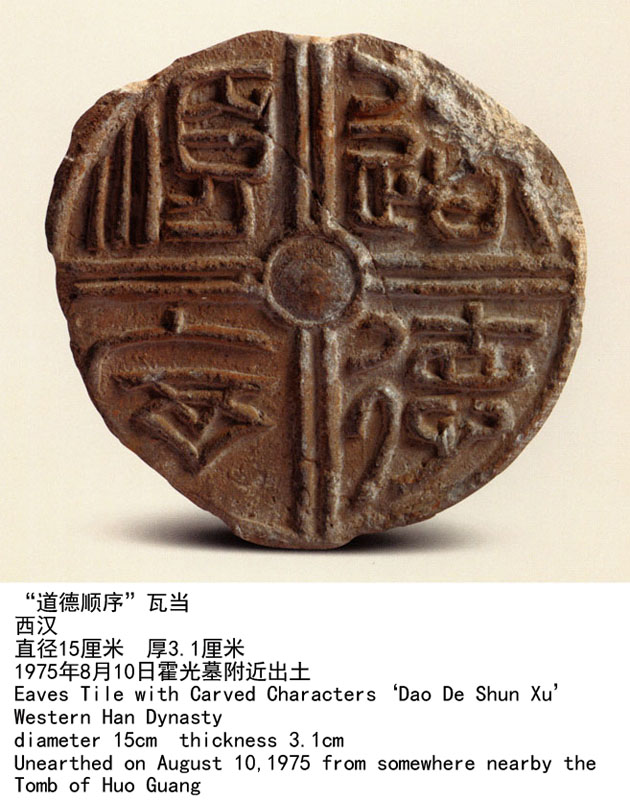

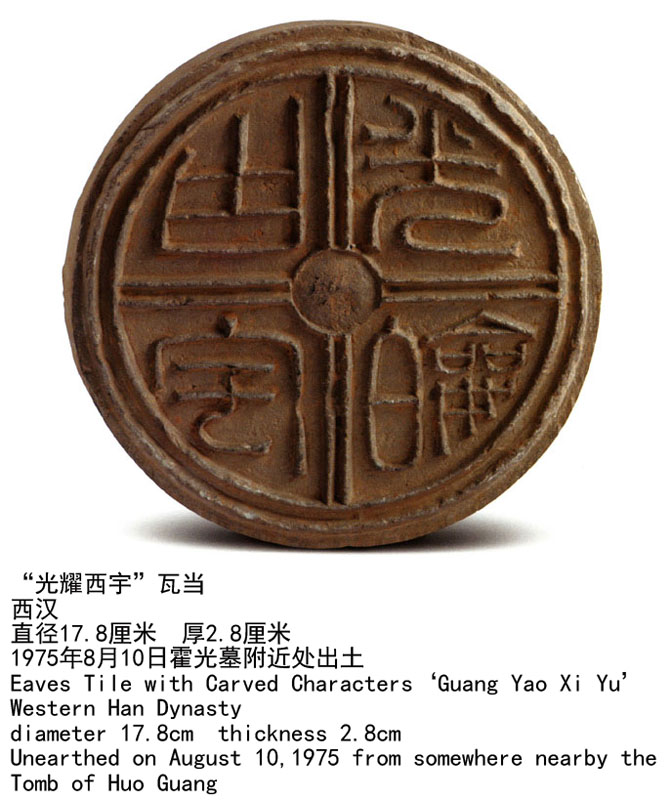
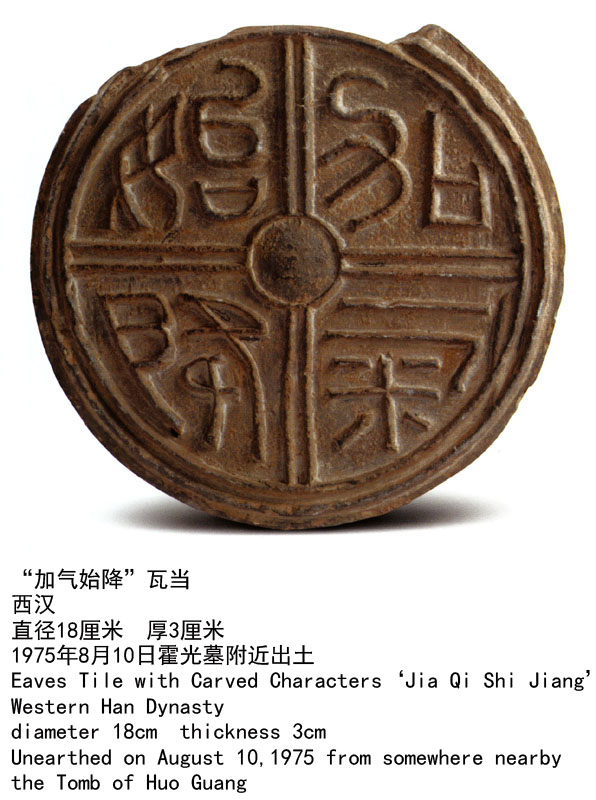
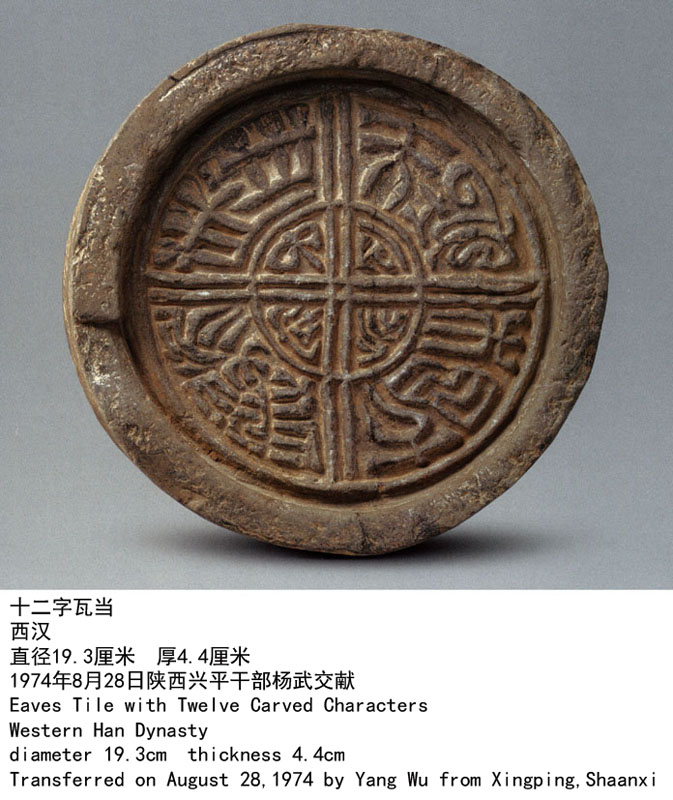
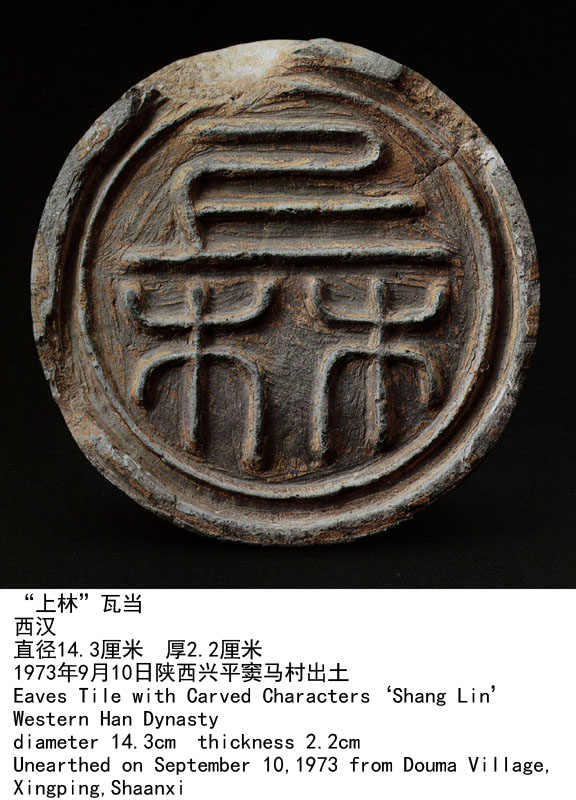

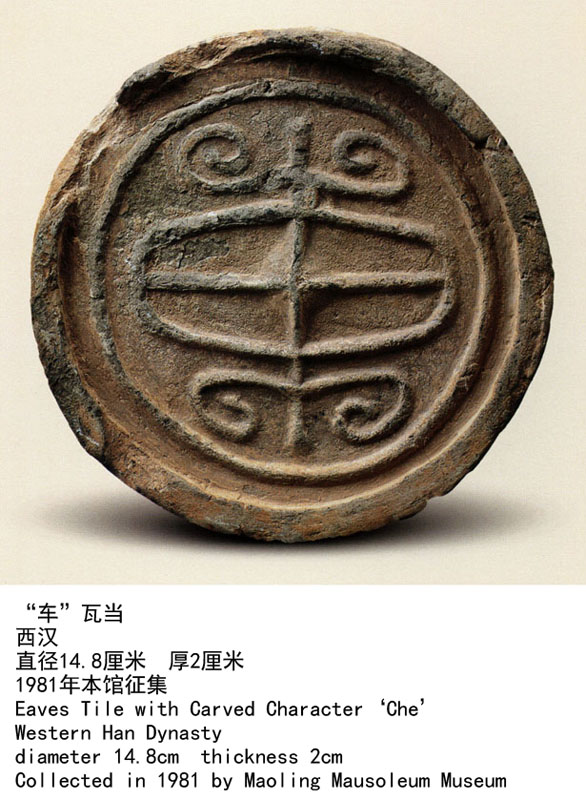
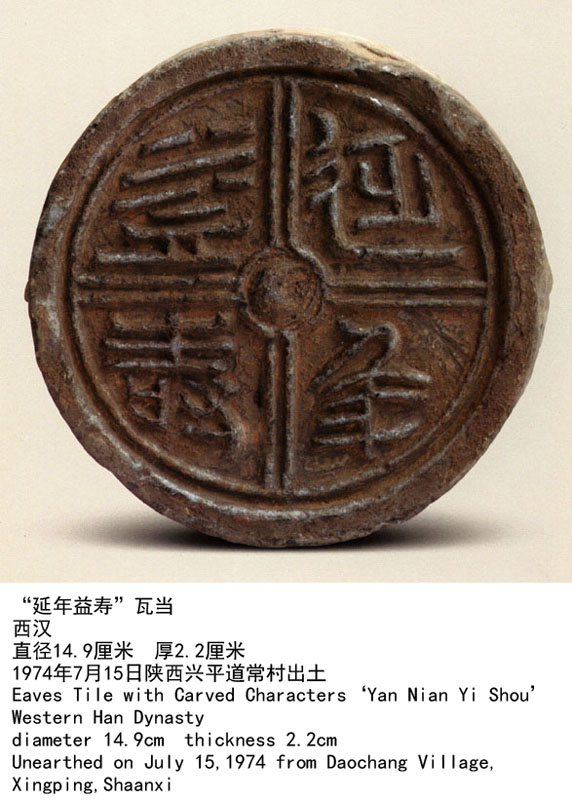
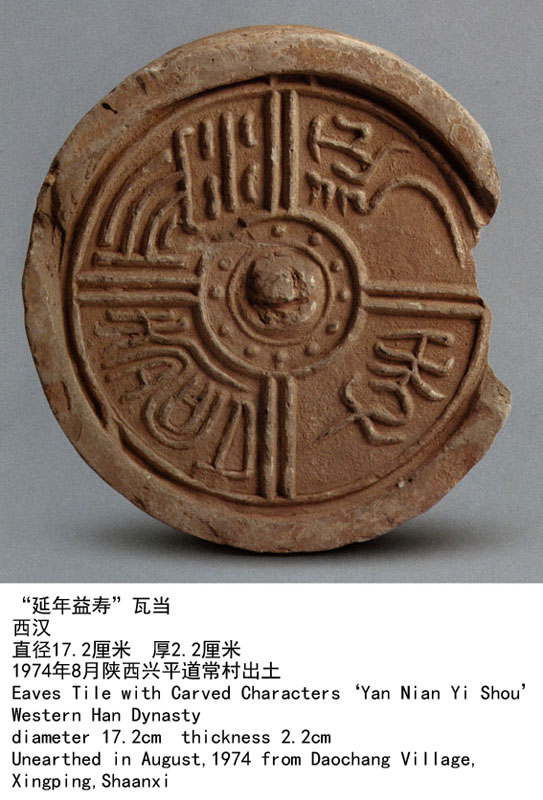
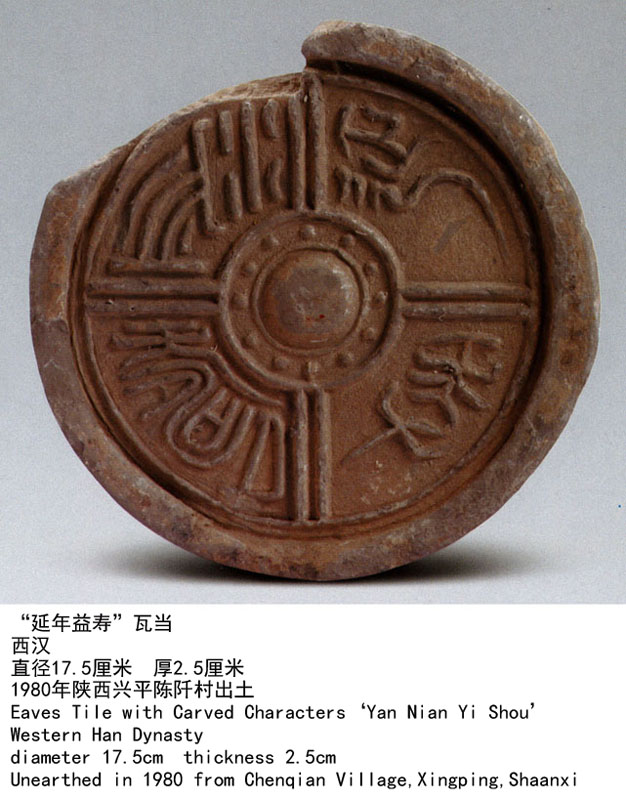
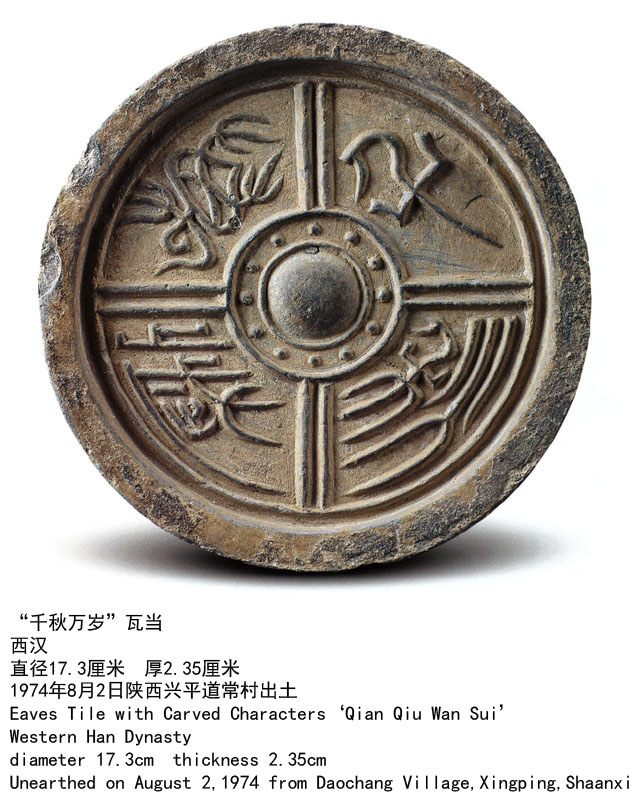
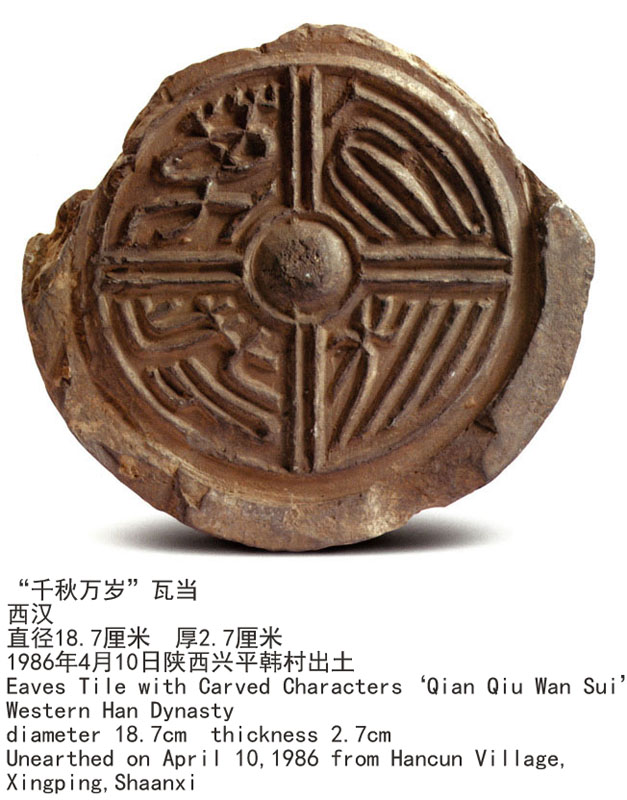
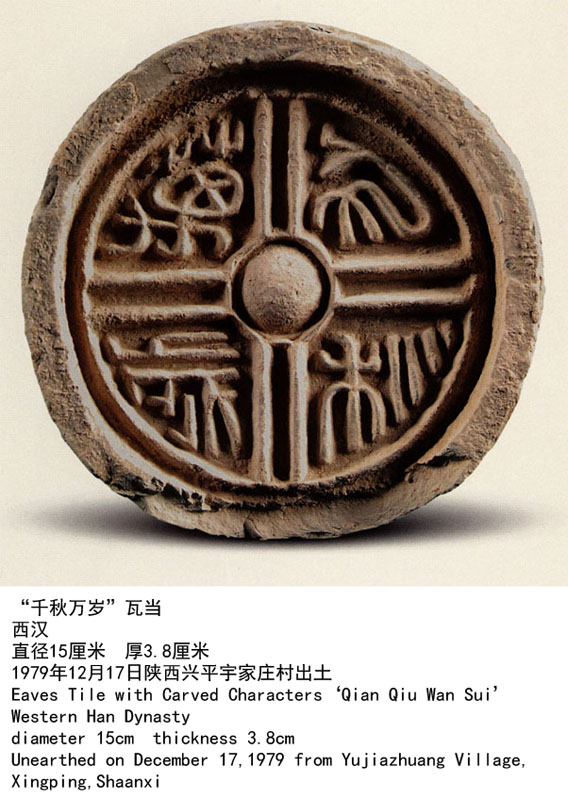
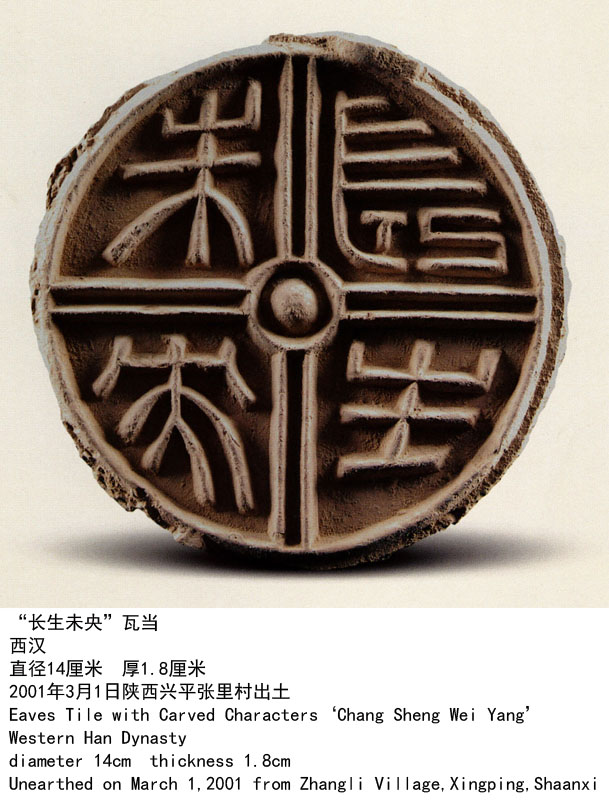
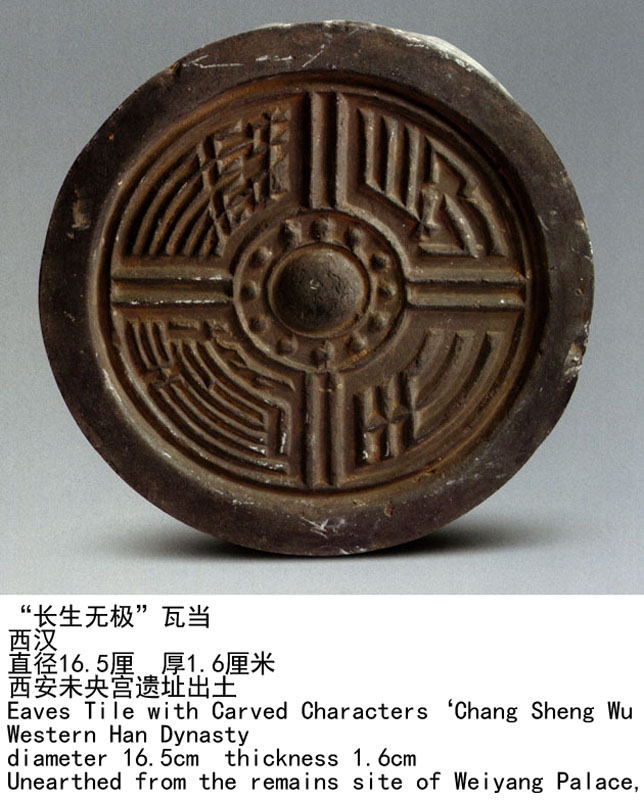
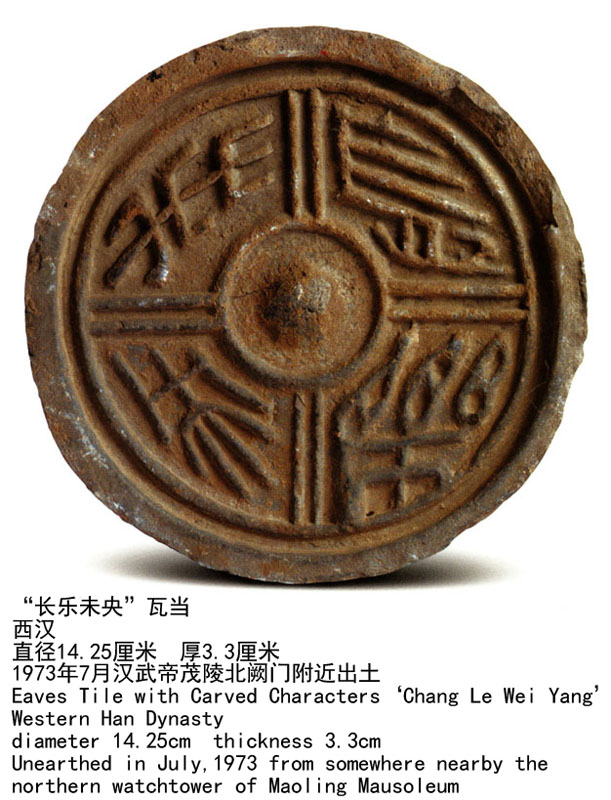
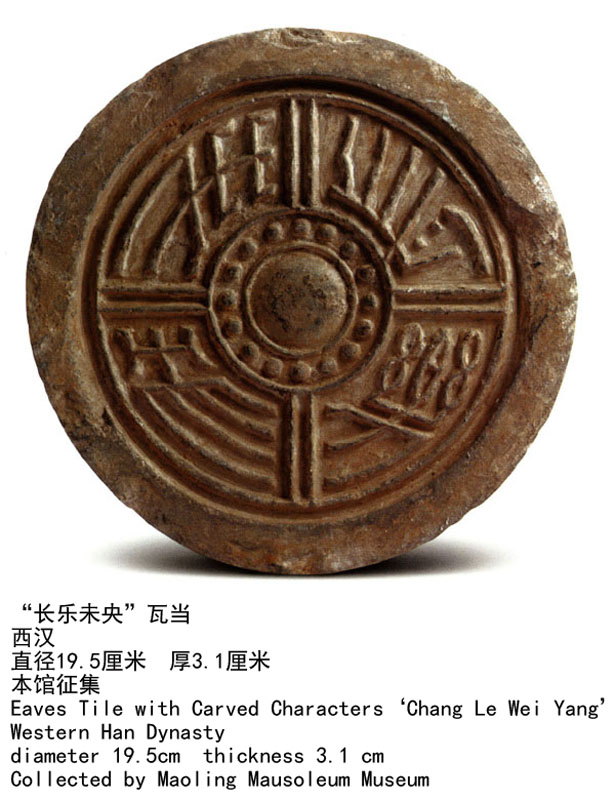
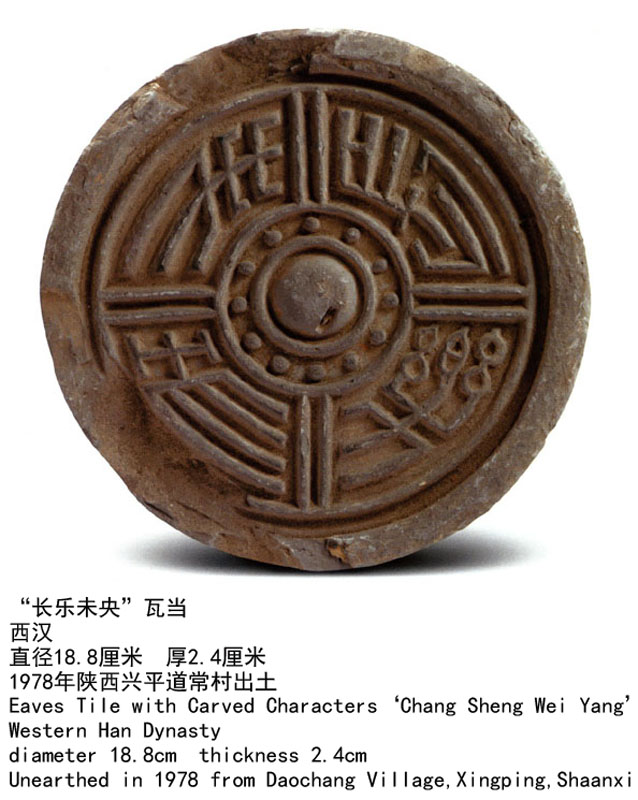
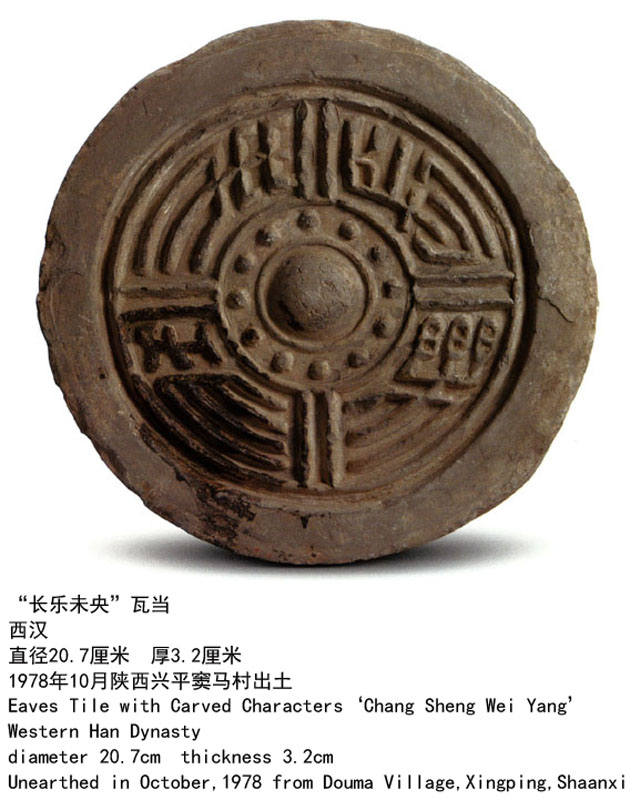
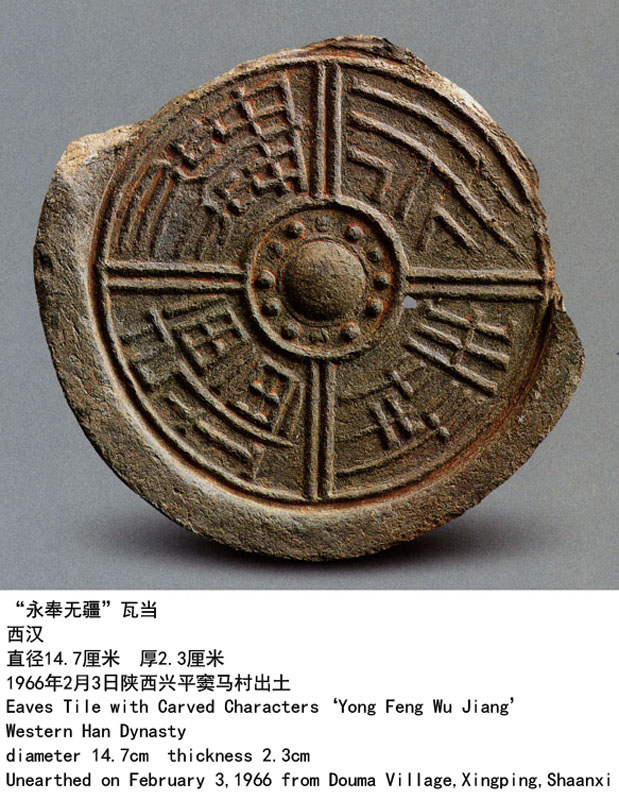
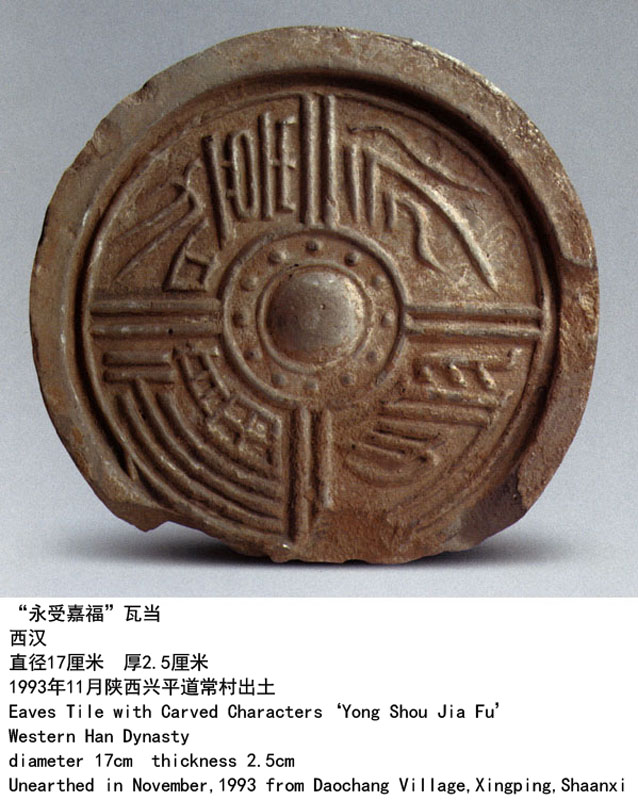
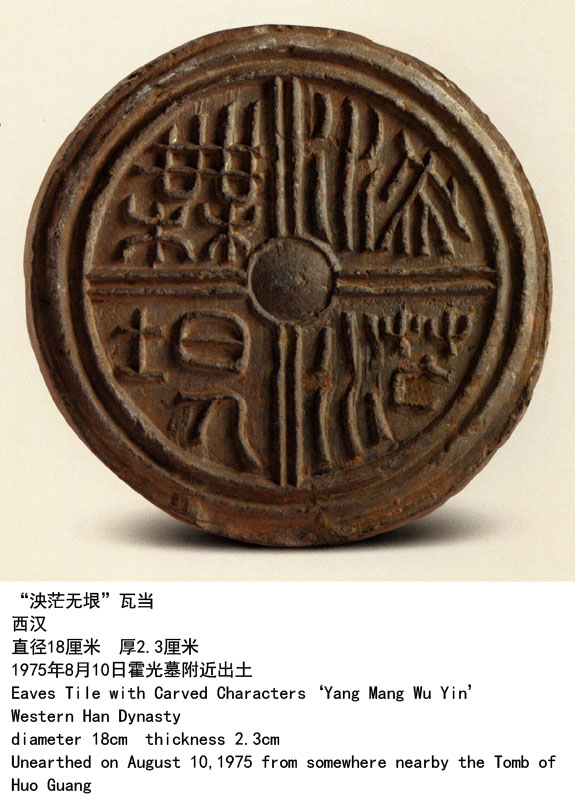
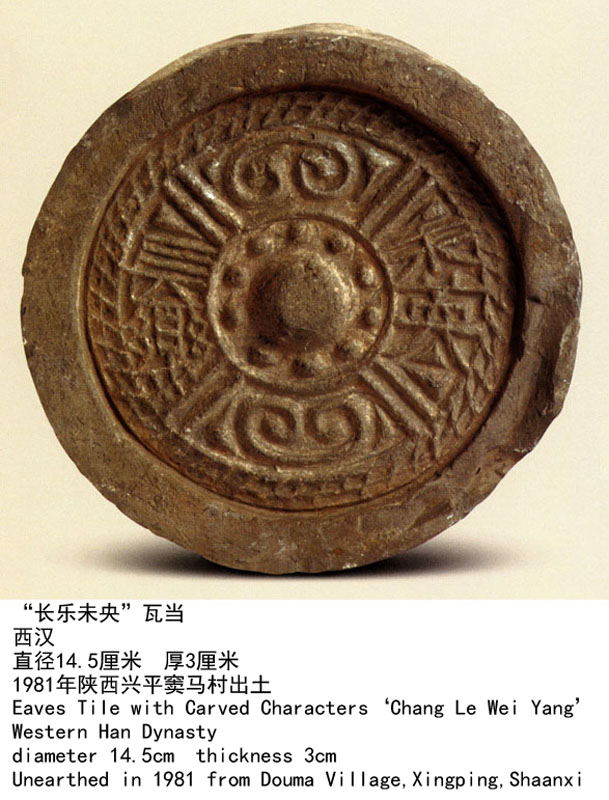
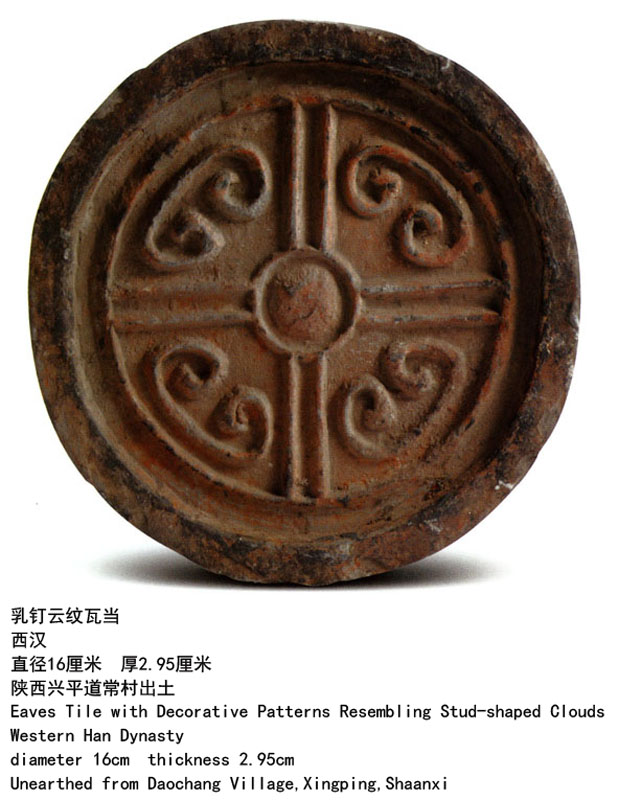
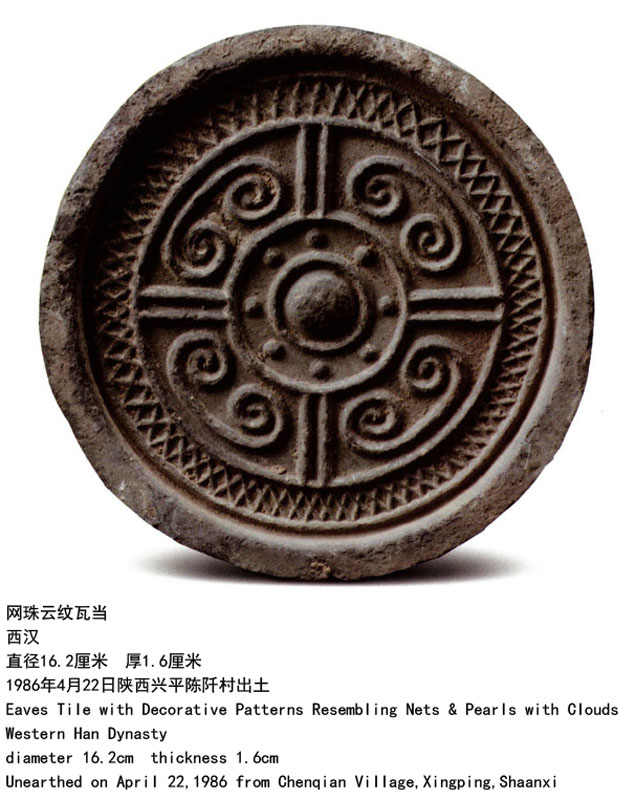
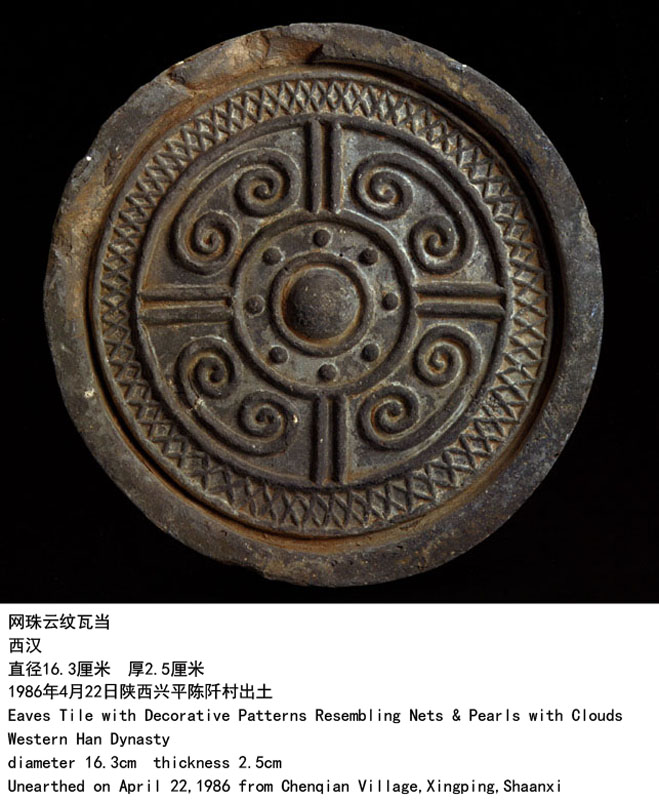
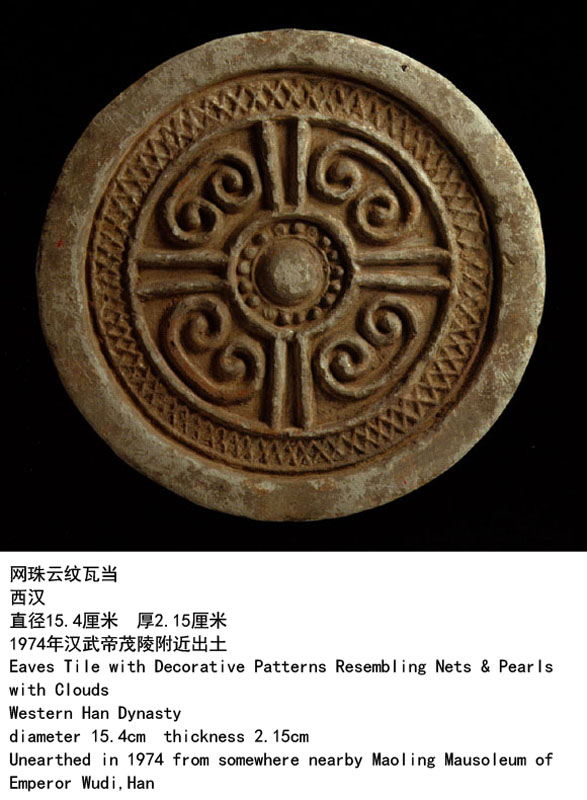
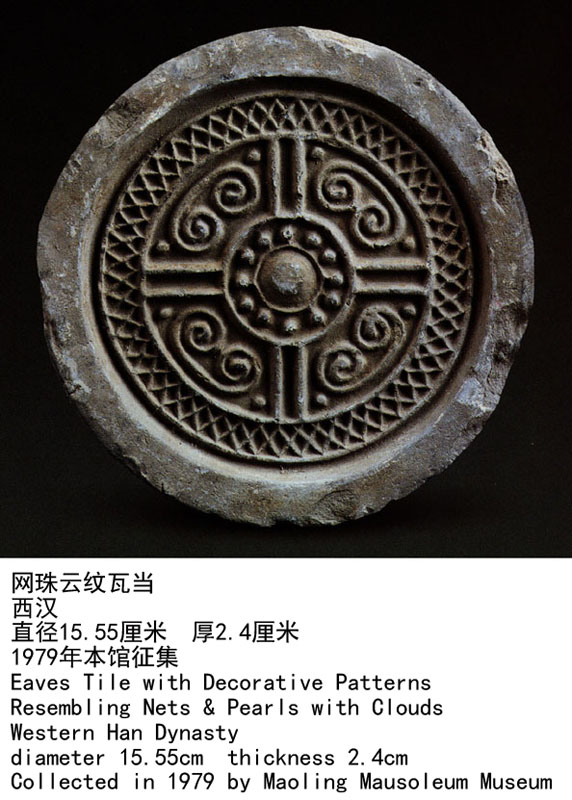
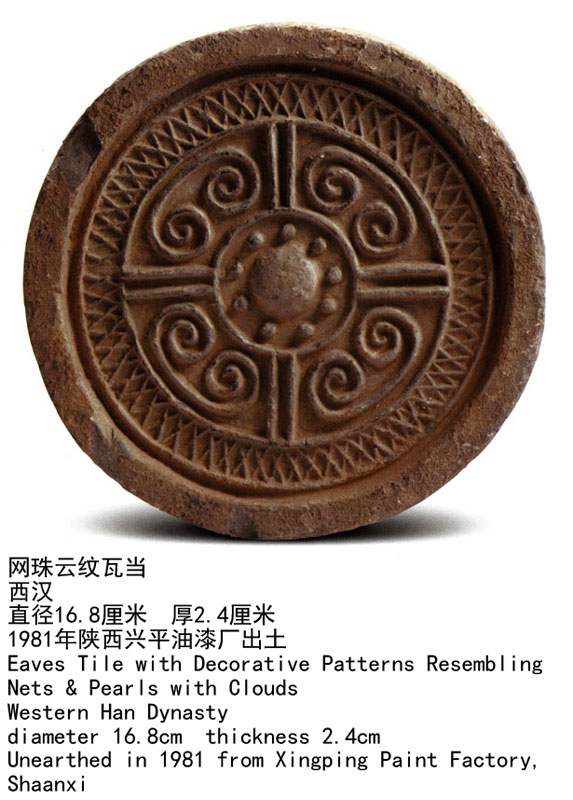
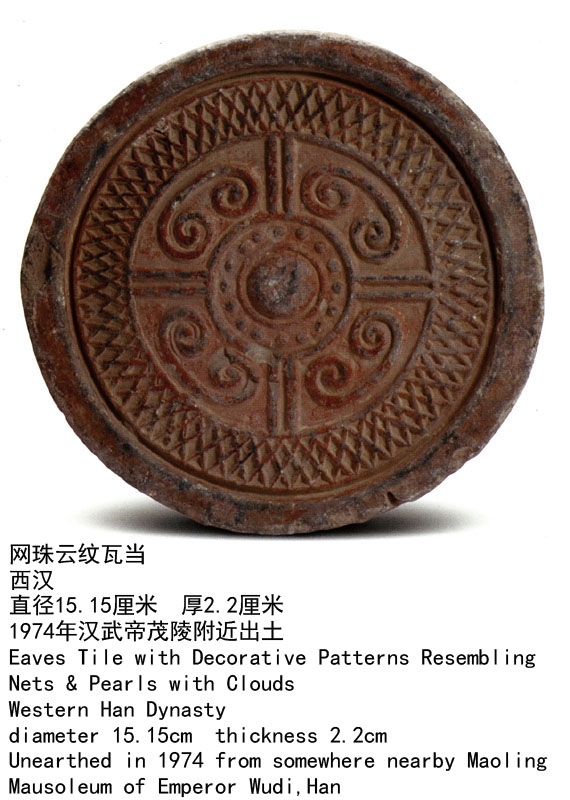
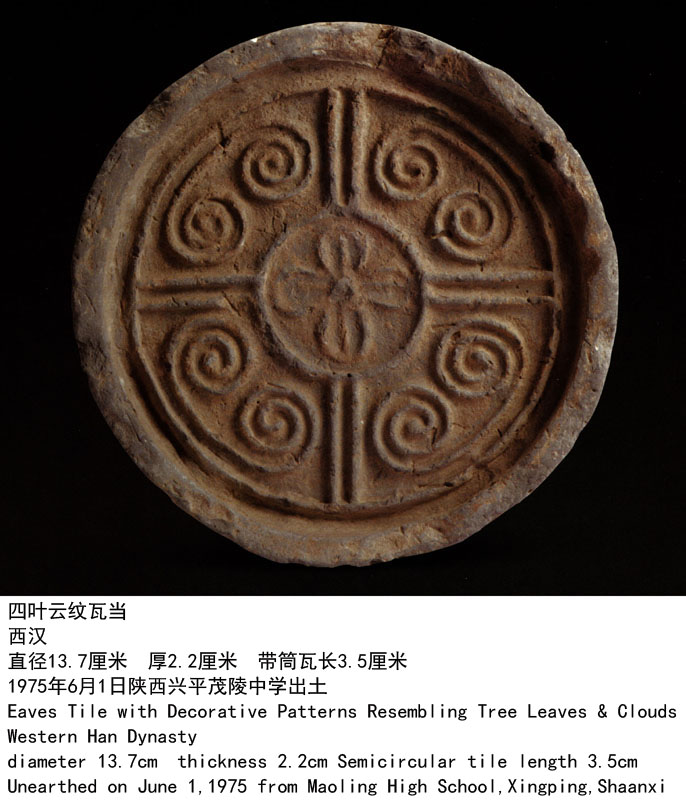
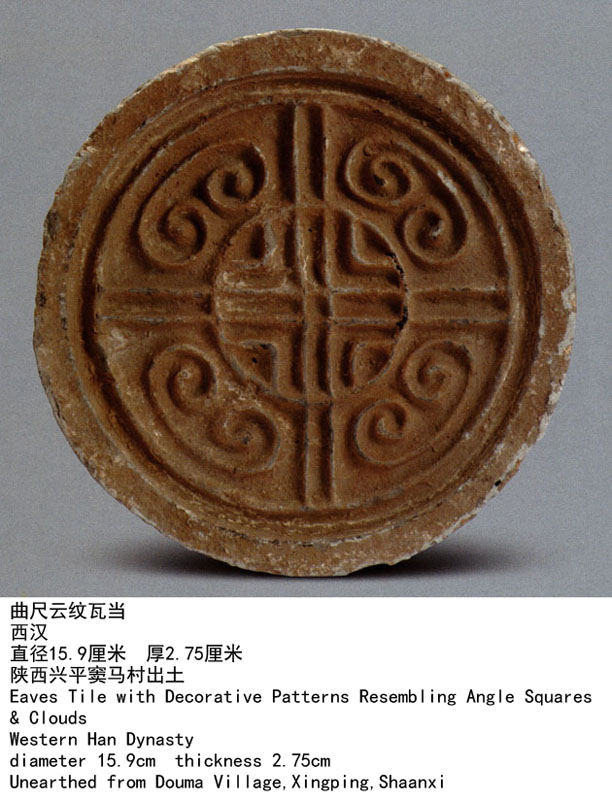
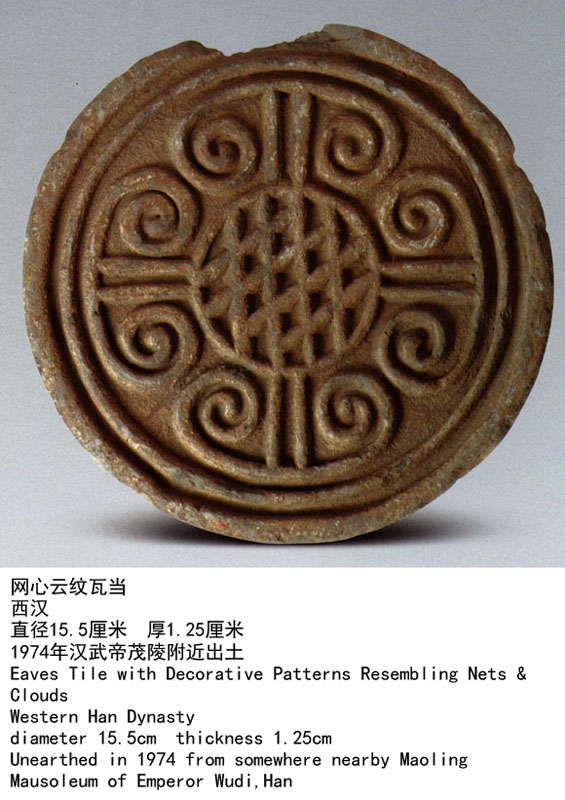
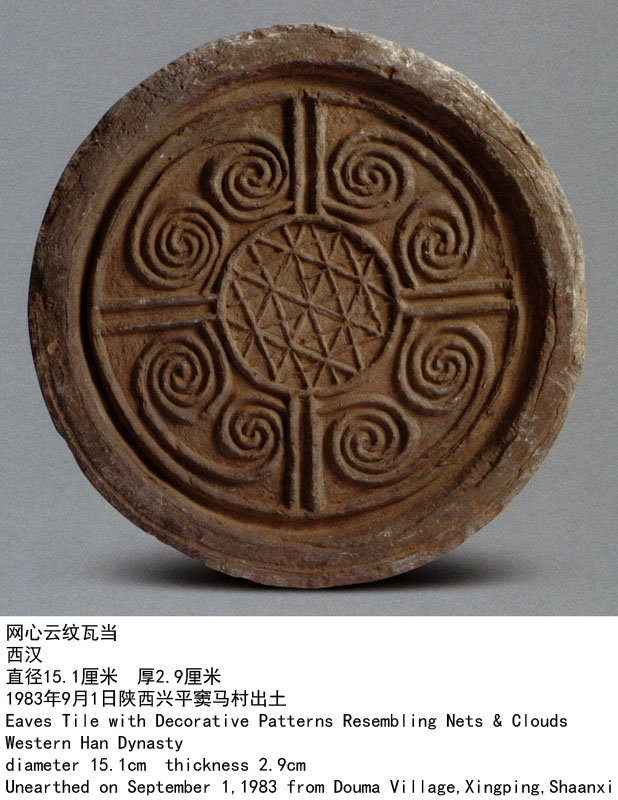
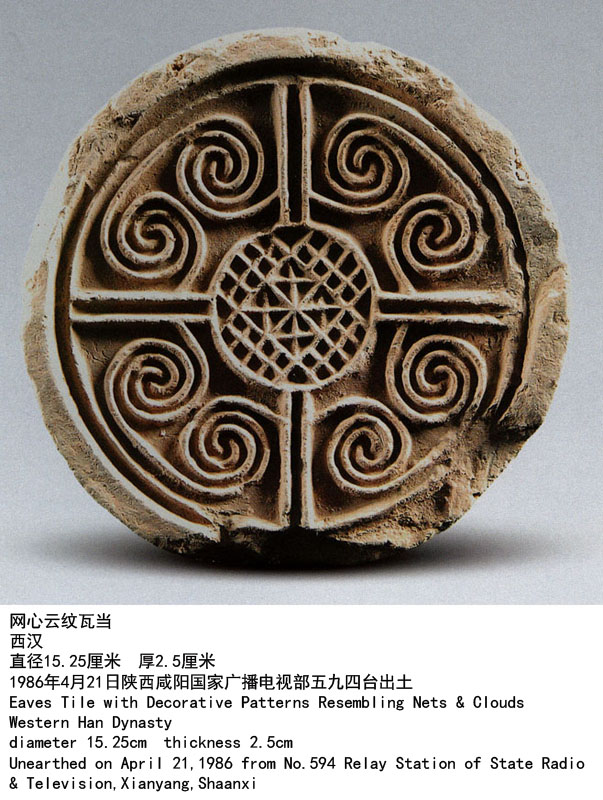
茂陵文物鉴赏图志/王志杰著.—西安:三秦出版社,2012.